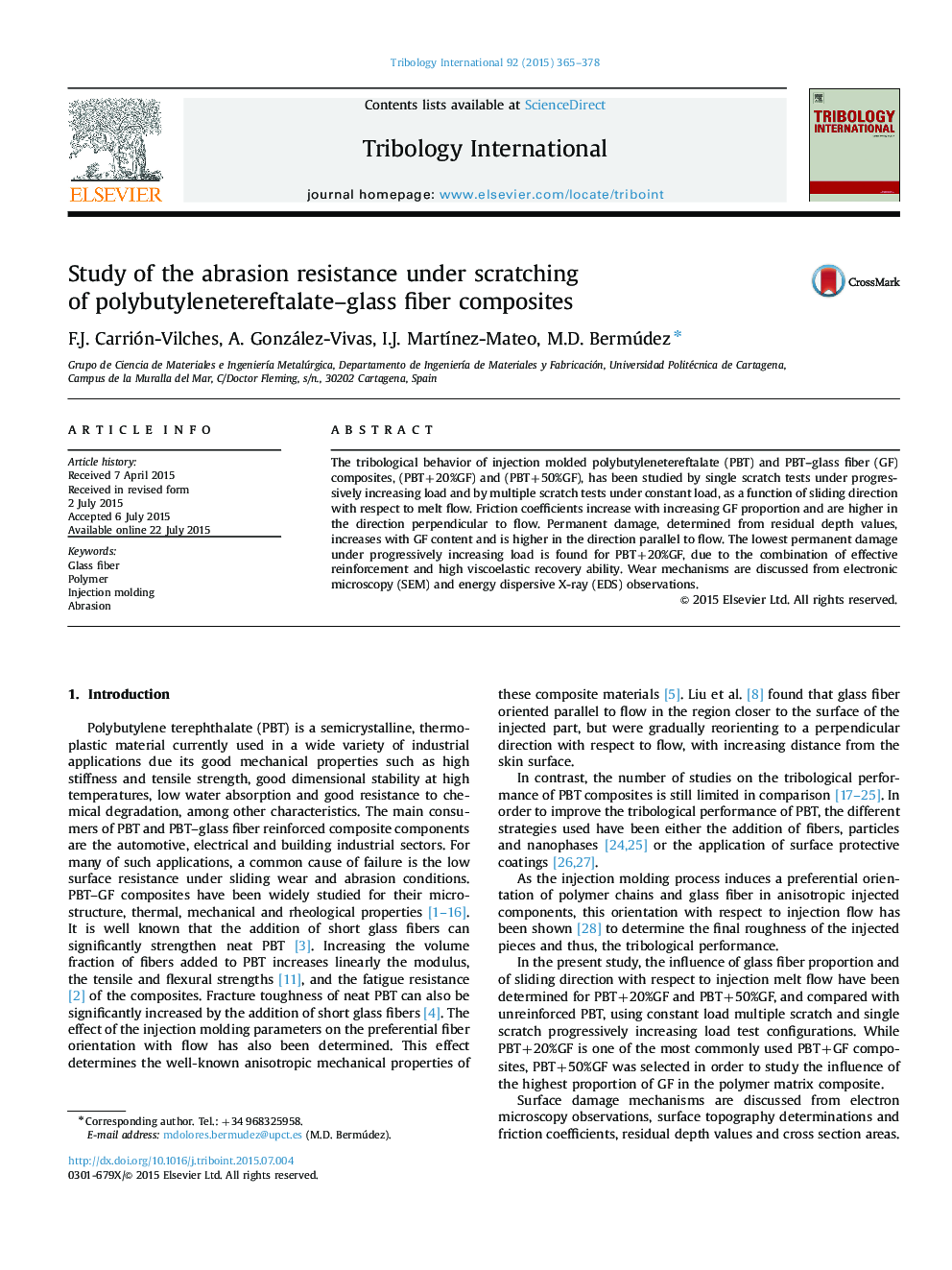| Article ID | Journal | Published Year | Pages | File Type |
|---|---|---|---|---|
| 614458 | Tribology International | 2015 | 14 Pages |
•Increasing glass fiber contents increases permanent damage and friction coefficients.•Permanent damage is higher in the direction parallel to melt flow.•The lowest anisotropy is found for the highest glass fiber proportion.
The tribological behavior of injection molded polybutylenetereftalate (PBT) and PBT–glass fiber (GF) composites, (PBT+20%GF) and (PBT+50%GF), has been studied by single scratch tests under progressively increasing load and by multiple scratch tests under constant load, as a function of sliding direction with respect to melt flow. Friction coefficients increase with increasing GF proportion and are higher in the direction perpendicular to flow. Permanent damage, determined from residual depth values, increases with GF content and is higher in the direction parallel to flow. The lowest permanent damage under progressively increasing load is found for PBT+20%GF, due to the combination of effective reinforcement and high viscoelastic recovery ability. Wear mechanisms are discussed from electronic microscopy (SEM) and energy dispersive X-ray (EDS) observations.
